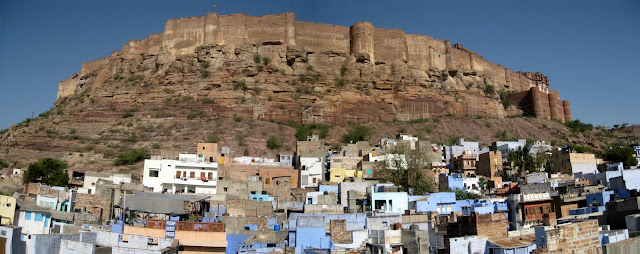Throughout India, everyone is trying to sell you something, all the time. You literally can’t walk 10 ft without someone pitching you a ride in their rickshaw, a look in their shop, a stay at their hotel, a booking on their trips, or a plain and simple ask for money. This is just part of the intensity of India, and while it gets old, you really can’t fault them for it – with over 1 billion people in the country, it’s a cut-throat competitive market for survival. At least these people are motivated and enterprising.
So, let’s say you take the bait, you’re interested in buying some of Rajasthan’s beautiful textiles or art, and you’ve allowed yourself to be pulled into a nice-looking shop. Here is some typical dialogue:
Welcome to my shop! You will not be disappointed! We have the best textiles in all of Rajasthan. Richard Gere and Tom Cruise, whenever they come to India, they come shop in my store. And I export to many stores in Paris, Rome, and New York. I even supply to many famous fashion designers – Armani, Burberry, and Versace!
Now, all of this is likely a lie, as every shop you pass seems to claim Richard Gere’s patronage (why Richard Gere?!?), though we did see a NYTimes article about one of the shops supplying famous boutique stores in NYC.
All store owners start with 3 questions, and they are always the same questions. At first, they may just seem interested in who you are, but each question is really providing them insight into your buying power and naivete:
Where are you from? This gauges whether you are likely to have money. You say America, they see $$
Where are you staying? A more detailed assessment of your financial situation, and what you’re willing to pay for in India, which can be a huge range (rooms from $5 to $500)
How long have you been here? This question determines 2 things: are you going to buy something today, and are you aware of Indian pricing and haggling. If you say, “I’ve been here for a week, and I head home tomorrow,” you’re prime bait – you want to buy souvenirs, and you likely aren’t aware of the true market value of what he’s selling. If you say, “I’ve been in India for 6 months,” that’s bad news, as you likely have seen these products around the country, have learned how to haggle, and know how to call bullshit when they attempt to put a fast one over you. Needless to say, we claimed to have been in the country for way longer than we actually had.
Now that the store owner has a general feel for what you’re willing to spend, it’s time to lay it on thick. And it is a hell of a presentation. Generally you’re taken to a separate room, where an air conditioner is running at full blast. Two or three assistants will unroll, unfold, and properly present to you every color, fabric, and style they have in stock, while the lead salesman describes the origin, material quality, and patterns of each item in the showcase. As soon as you expresses the slightest interest in a particular piece (ie, you touch it or look at it for more than 2 seconds), the presentation is modified to focus on those particular styles. There is no dead space in the conversation – every moment is filled with BS about the amazing quality of the material, craftsmanship, or beauty of the products. These guys act as though they are your best friends, and all they want to do is give you a great deal.
That is, until you say no. And once you say no (and they have accepted that no, so really after you say it about 10 times), it is amazing how quickly their attitude changes. The air conditioner gets shut off, and their smiles have turned to scowls. Suddenly, you’re made to feel guilty for not purchasing, for wasting their valuable time (this is despite the fact that we very specifically would tell them upon entering the shop that we’re not interested in buying anything today, just browsing). Indian salespeople are not scared to make you feel awkward and uncomfortable, and this guilt trip might just make you feel bad enough to change your mind.
Because of situations like this, I didn’t particularly love buying things in India. But that’s not to say that it isn’t enjoyable for some. We had some pretty significant limitations – we didn’t have space to carry things, we didn’t have a lot of money to spend on souvenirs, and neither one of us particularly likes to barter. But for people with more room and money, and for those that like to haggle, you can get some amazing things at incredible prices.
 In my latest post for World Nomads, I talk about how Jaisalmer’s famous fort is being loved to death by locals and travelers alike. Check it out
In my latest post for World Nomads, I talk about how Jaisalmer’s famous fort is being loved to death by locals and travelers alike. Check it out 

